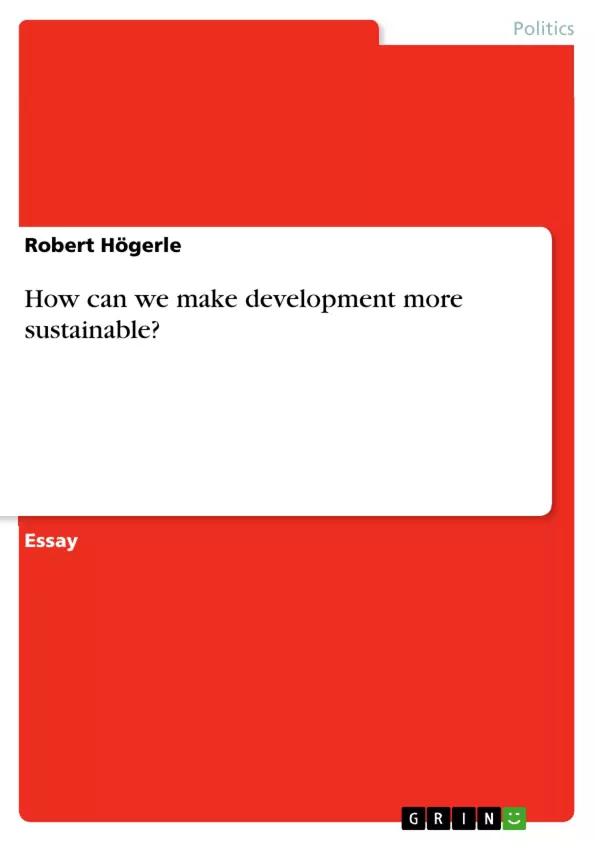One could wonder what to say bad about development and aid or even against
sustainable development. Over the past few years, sustainable development has
emerged as the latest catchphrase. Non-governmental as well as governmental
organizations agree talking about this term, because it is one of those magical fields
in which hardly something can go wrong.
This attitude lead to a blurring and forgetting of what sustainable development truly
is.
The purpose of this essay will be to re-elaborate and define the terminus
“sustainable” in context to development followed and supported by a historical
approach on the pre-Agenda 21 framework.
Therefore the results will be clarify by a case-study.
Upon these pillars the conclusion will point out how development can be made more
sustainable in future or if it has become already more sustainable.
Table of Contents
- INTRODUCTION
- WHAT IS SUSTAINABILITY?
- HISTORY OF DEVELOPMENT UNDER THE ASPECT OF SUSTAINABILITY
Objectives and Key Themes
The main objective of this essay is to define the term "sustainable" in the context of development and to provide a historical overview of sustainable development frameworks. The paper will examine the concept of sustainability in relation to the environment, society, and the economy.
- The definition of sustainability and its three pillars: environmental, social, and economic sustainability.
- The historical development of the concept of sustainable development, including key milestones like the Club of Rome, the Stockholm Conference, and the Brundtland Report.
- The interconnectedness and potential conflicts between the three pillars of sustainable development.
- The role of international cooperation and the North-South conflict in sustainable development.
- The importance of long-term thinking and the impact of short-term views on sustainable development.
Chapter Summaries
- INTRODUCTION: The introduction addresses the growing popularity of the term "sustainable development" and the need to re-define the concept. The essay aims to clarify the meaning of "sustainability" in the context of development and explore historical developments leading to the Agenda 21 framework.
- WHAT IS SUSTAINABILITY?: This chapter examines different definitions of sustainability, including the World Bank Group's definition based on the Brundtland Commission's report. It explores the interrelationship between environmental, social, and economic sustainability, highlighting their interdependence and potential conflicts.
- HISTORY OF DEVELOPMENT UNDER THE ASPECT OF SUSTAINABILITY: This chapter explores the historical evolution of the concept of sustainability. It discusses the early understanding of sustainable resource management, the emergence of the Club of Rome, and the significance of the Stockholm Conference and the Brundtland Commission. The chapter also addresses the North-South conflict and its influence on sustainable development discourse.
Keywords
The key focus of this essay is on sustainable development, its history, and the interconnectedness of environmental, social, and economic aspects. The text discusses key milestones like the Club of Rome, the Stockholm Conference, the Brundtland Commission, and the Agenda 21 framework. Additionally, the essay examines the North-South conflict and its impact on sustainable development discussions.
- Quote paper
- Robert Högerle (Author), 2011, How can we make development more sustainable?, Munich, GRIN Verlag, https://www.grin.com/document/271960



